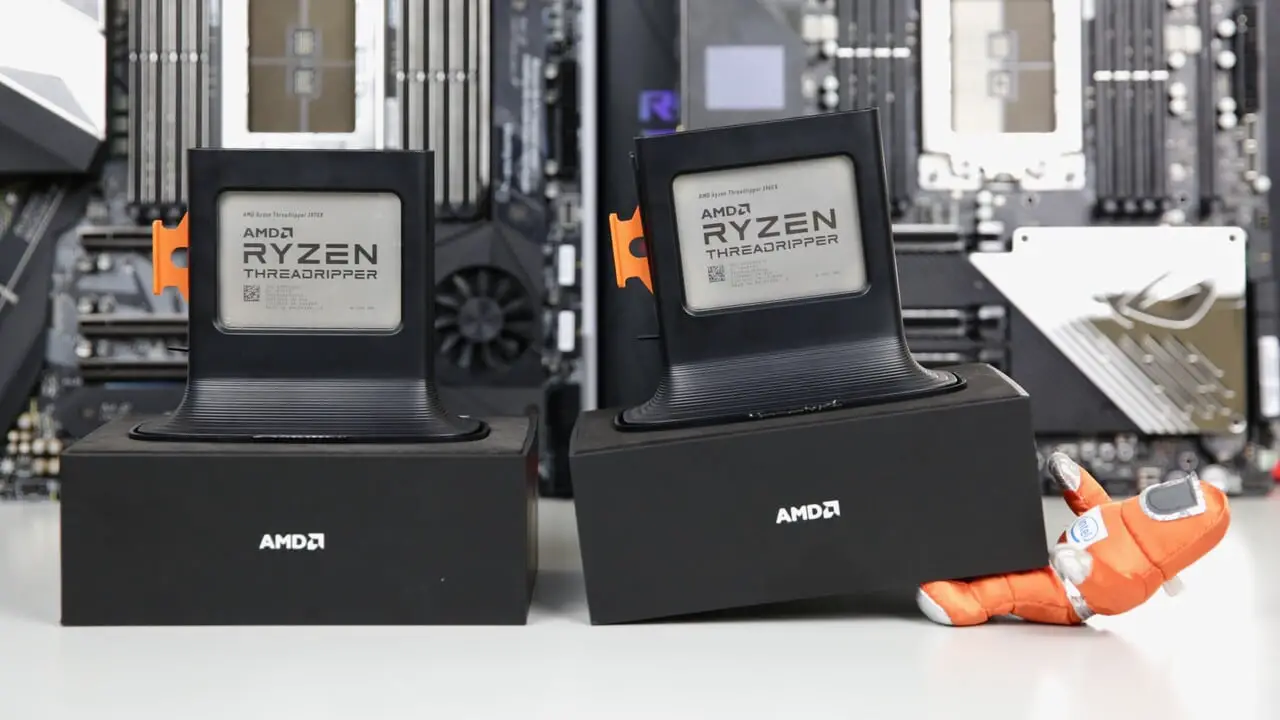tl; dr: With Ryzen Threadripper 3970X and 3960X, AMD straightens the relationship between its own HEDT and mainstream platform. The new CPUs still offer "only" 32 and 24 cores, but thanks to the switch to Zen 2 and the chiplet design, they still increase by 50 percent. Intel Core X no longer sees a country there.
AMD Ryzen is followed by AMD Ryzen Threadripper – now in the third generation. After AMD has raised the bar for the number of cores from up to 16 for Threadripper 1000 to up to 32 for Threadripper 2000 in the past two years and finally had its own high-end product at the start again, the new generation is here at least for this year the focus on the switch to Zen 2. The two versions 3960X and 3970X presented today remain with a maximum of 32 cores, but basically everything else is upgraded so strongly that in benchmarks it seems as if a further "core upgrade" had taken place. The performance gain is breathtaking in places. And elsewhere, testing was occasionally airborne.
Technical data compared to the predecessor
The Ryzen Threadripper 3970X with 32 cores replaces the Ryzen Threadripper 2990WX with 32 cores, the 3960X with 24 cores and the 2970WX with 24 cores. But if you conclude that comparatively little is happening, you are fatally wrong.
With the change to the new I / O die chiplet design and Zen 2, not only does the fast L3 cache double and the memory interface can deal with faster memory, there are also much higher clock speeds and those on a 7 nm basis drastically increased IPC, with which Ryzen 3000 could already score. AMD estimates the IPC gain alone again at 15 percent, the clock speed is also around 20 percent in real everyday life thanks to the additionally increased TDP to 280 watts. And if all of this is combined, the test in multi-core applications actually produces an average of 50 percent faster processors.
But the end of the flagpole has not yet been reached. As AMD announces in parallel to the case of the NDA for 3970X and 3960X, there will be a Ryzen Threadripper 3990X with 64 cores at 280 watts TDP next year. None of these CPUs bears the “W” for workstation, which was only introduced last year.
As with all 3000 AMD processors, there is also growth in Threadripper's price. 100 or 200 US dollars surcharge before taxes means that the Threadripper 3000 compared to its direct predecessor in the USA, in Germany it is even 200 or 360 euros. And that's not just because the performance is increasing so much, but also with Epyc in mind. There are the two single-socket versions Epyc 7402P and 7502P with the same number of cores, less clock and TDP but octa-channel RAM for $ 1,250 and $ 2,300. With price dumping, AMD would primarily harm itself here. Intel Danger? Is not currently threatening.
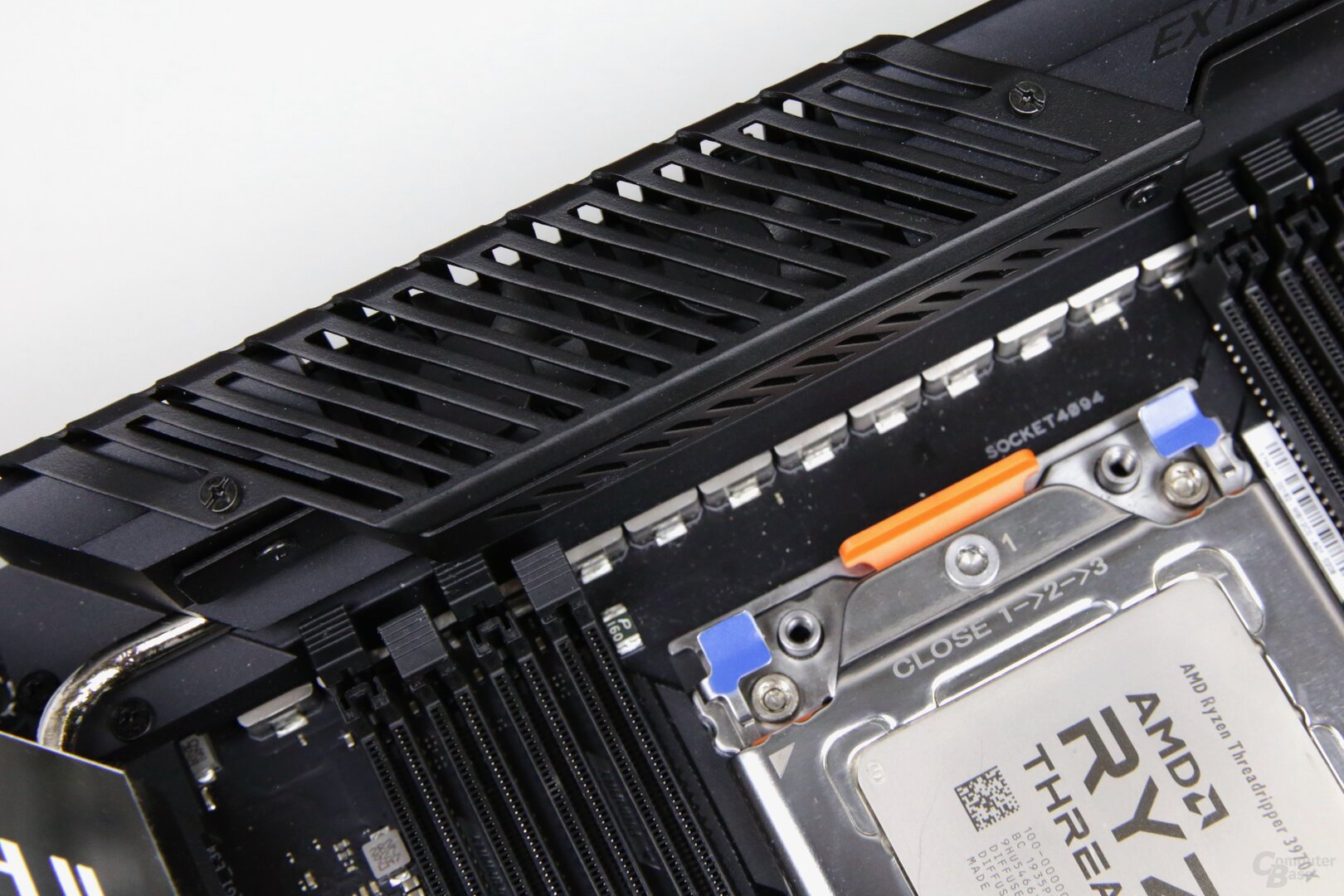
The chiplet design perfected
The biggest novelty from AMD was the introduction of Zen 2 next to 7 nm, the chiplet design. Multi-chip processors with generally identical This was there before, but it is now taking a completely new approach. Presented to the press for the first time in November 2018, this now runs through all new solutions from small with only two chips (1 × I / O-Die, 1 × CPU chiplet) per package to large with nine chips on one carrier (1 × I / O-Die, 8 × CPU chiplet).
AMD uses many similarities and the resulting synergies, which simplify the entire process and save a lot of money in the long term. For example, every CPU die is identical, regardless of whether it is used in the smallest Matisse or in the largest Epyc. A CPU die has always had eight cores and 32 MB L3 cache since the Zen-2 generation, the so-called chiplets are then combined with others and result in the finished end product.
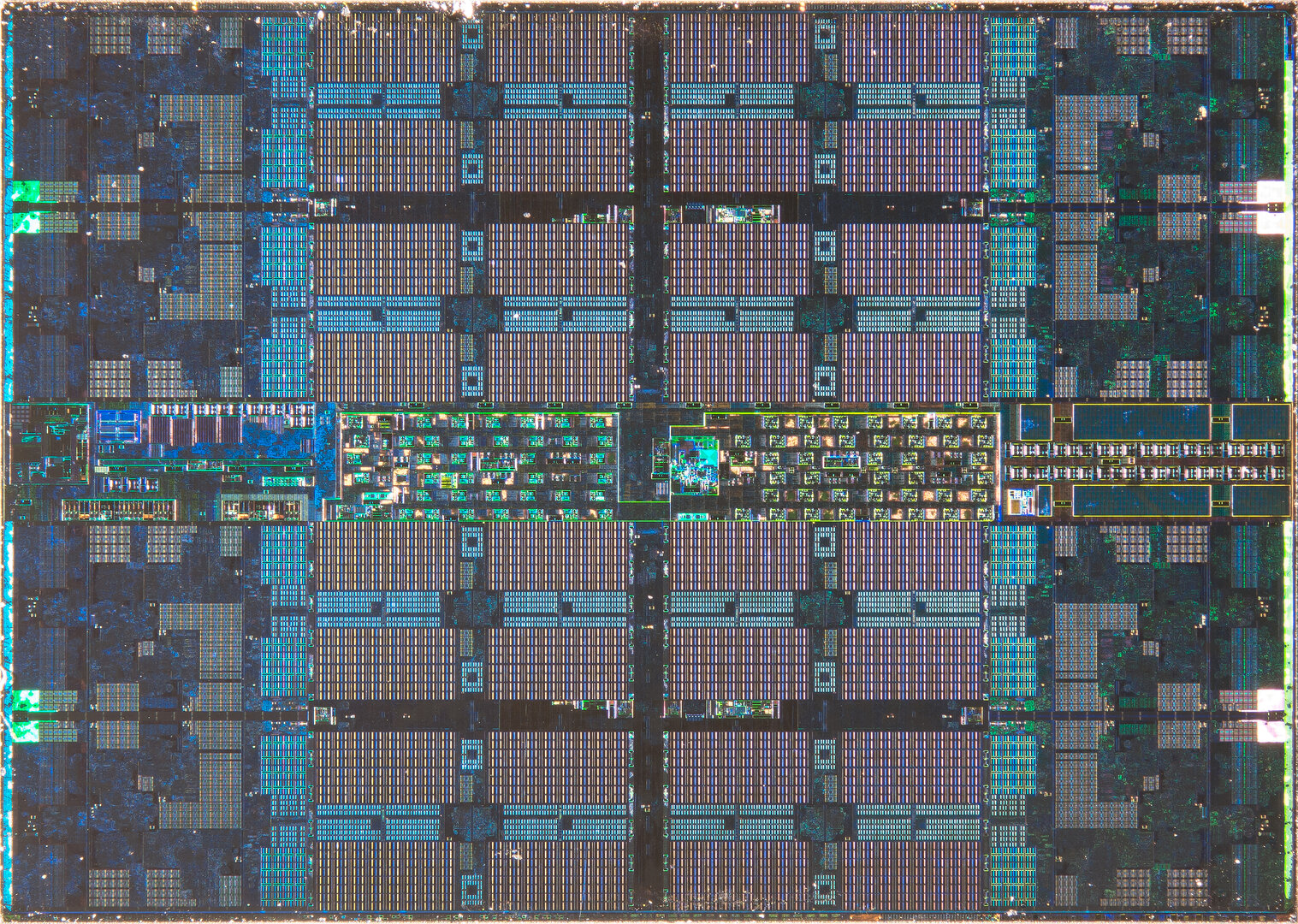
The CPU dies always include an I / O die in which the memory controllers and PCIe lanes are located. This is exactly where the biggest difference between the small mainstream products on the AM4 socket and the high-end models on the SP3 / sTRX4 socket lies.
Threadripper 3000 is almost an Epyc "Rome"
The I / O-Die from Epyc 2 "Rome" and now Threadripper 3000 "Castle Peak" is a giant. Globalfoundries accommodates 8.34 billion transistors in 12 nm production on a 412 mm² chip. For comparison: The consumer I / O chip for Ryzen 3000 is only 2.09 billion transistors heavy and occupies 125 mm² of space.
The dies, each with eight CPU cores, are even smaller with 74 mm², although 3.8 billion transistors are also installed there. Here the much finer 7 nm production from TSMC plays an important role.
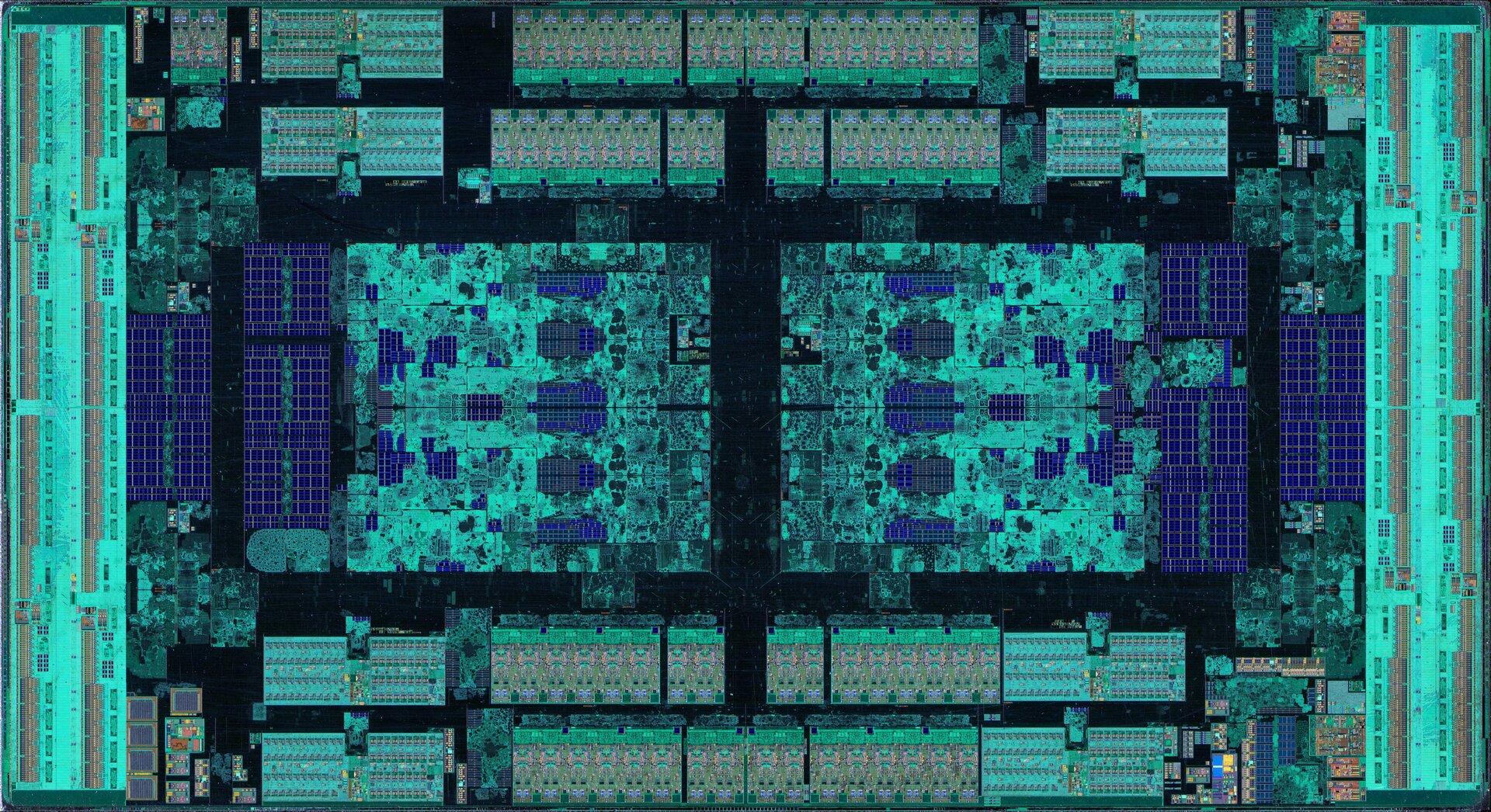
The Castle Peak and Rome I / O dies (IODs) are identical, but not the same for the application. Because at least the first two Threadripper 3000s do not all use eight built-in memory controllers (left and right at the edge in the picture), only half are provided, so eight channels become four. The halving continues at another point: Of the 128 PCIe 4.0 lanes of the IOD (recognizable above and below in the middle), Threadripper may only use 64. Rome has a full 128 lanes per CPU, 64 of which are used in the dual-socket setup for communication between the CPUs, so a total of 128 remain free.
Threadripper 3960X and 3970X consist of five chips
Both thread rippers use four CPU chips with eight cores per CPU die (CCD). With the 3970X all four are fully activated, with the 3960X two cores are deactivated in each CCD, but the cache is retained in full size. According to the hierarchy, the two fastest cores, i.e. those that can run at the highest turbo rate, are always in the CCD4. As usual, the four CCDs are connected to the large I / O die via the infinity fabric.
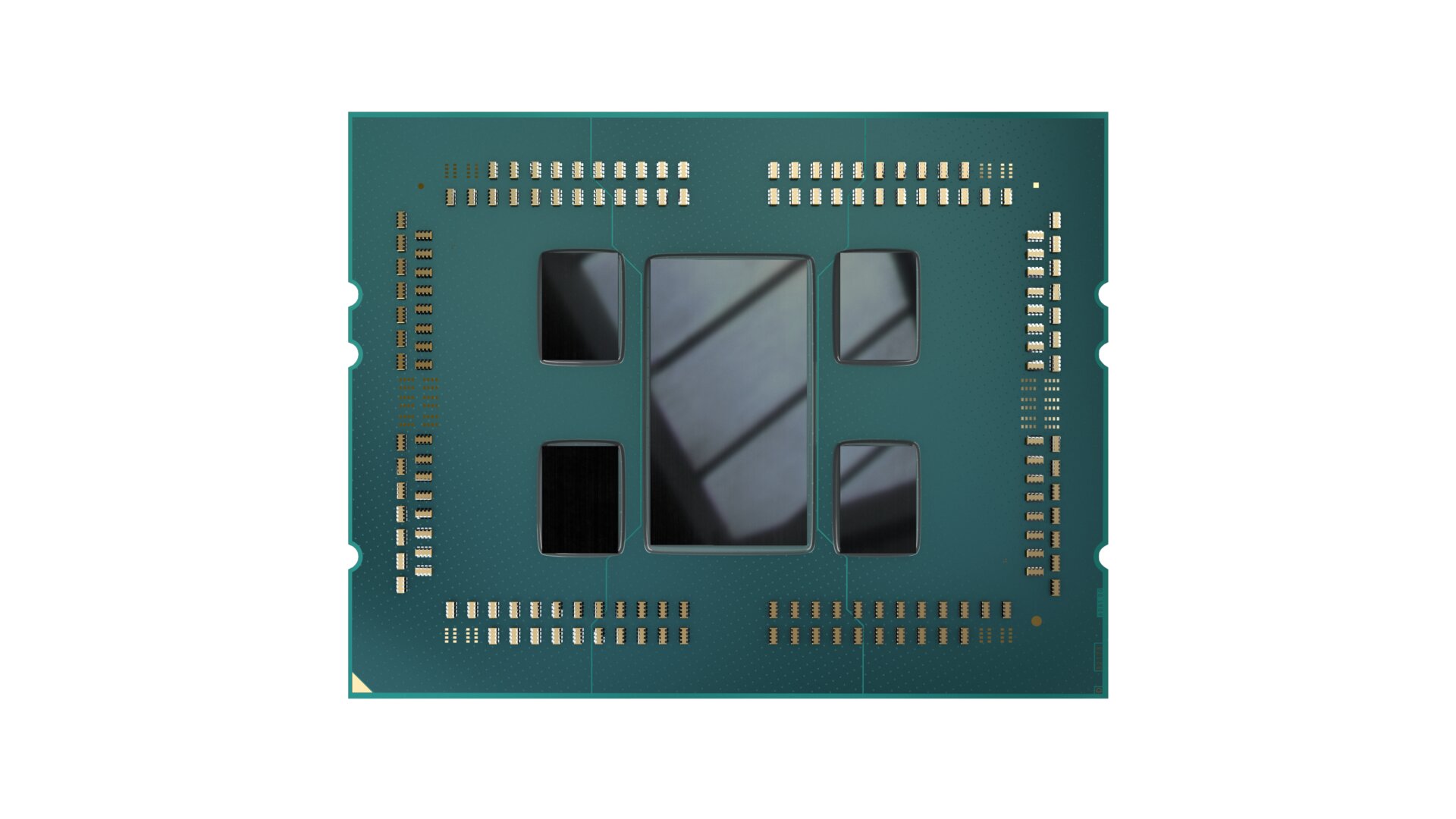
New platform with new old LGA 4096 base
LGA 4096 has been the name of the base for AMD's high-end solutions from Zen since the very beginning, and it remains so with Threadripper 3000, but the dog is buried in the details. Because the new processor is not functionally compatible with the previous socket, although it is mechanical. However, the pin assignment has been changed almost completely, so a new model cannot work in the old socket or vice versa. However, old and new CPUs can be installed on the wrong platform.
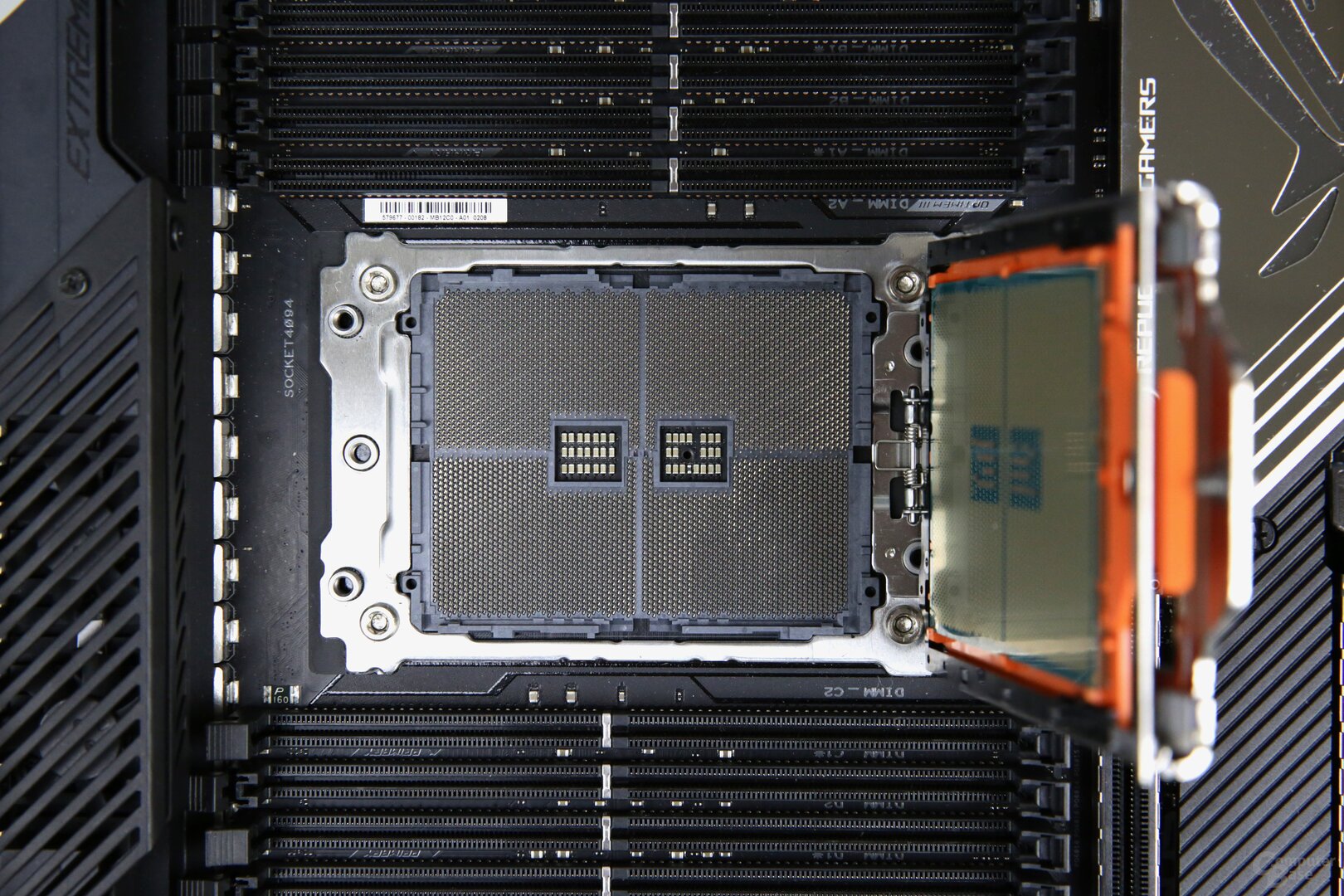
AMD explained the motivation with the lack of scalability of the TR4 socket, which is now becoming sTRX4. AMD had apparently castrated the original socket and the boards so strongly that there was now no other option than to make it completely new, while Epyc on socket SP3 also easily in the new Rome generation on a two-year-old mainboard of the first generation works. At least AMD's roadmap for the new Threadripper socket suggests that it will also be used in the next generation – "Subject to change“Note included.
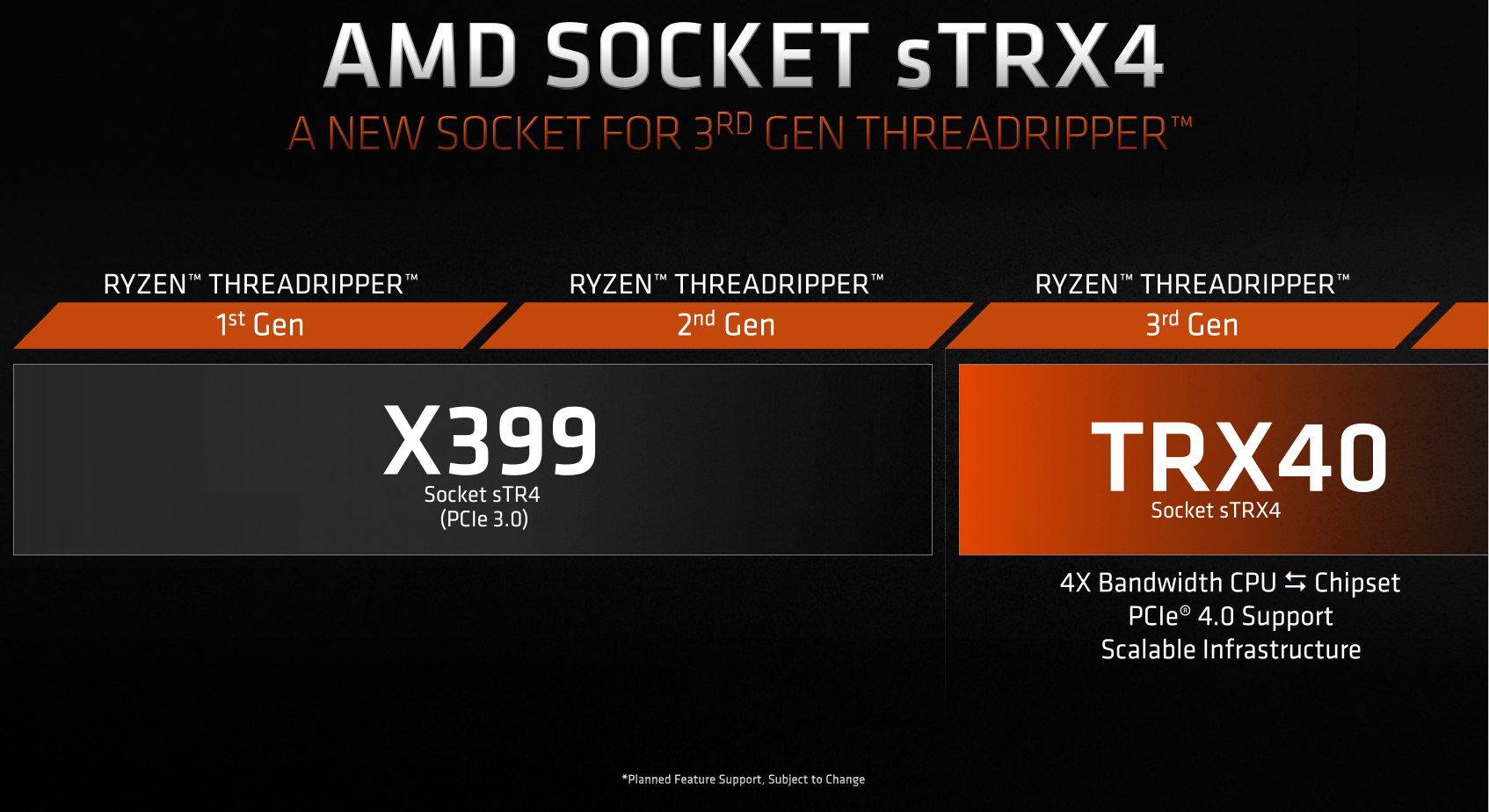
New chipset TRX40 for remarkable luxury mainboards
A new socket requires new mainboards. The logical consequence: An adapted new chipset ("TRX40") is also included if everything has to be redone anyway. The result is the best-equipped boards that have existed so far, because they combine the diverse ports of the CPUs, more precisely the I / O-Dies, with the chipset.
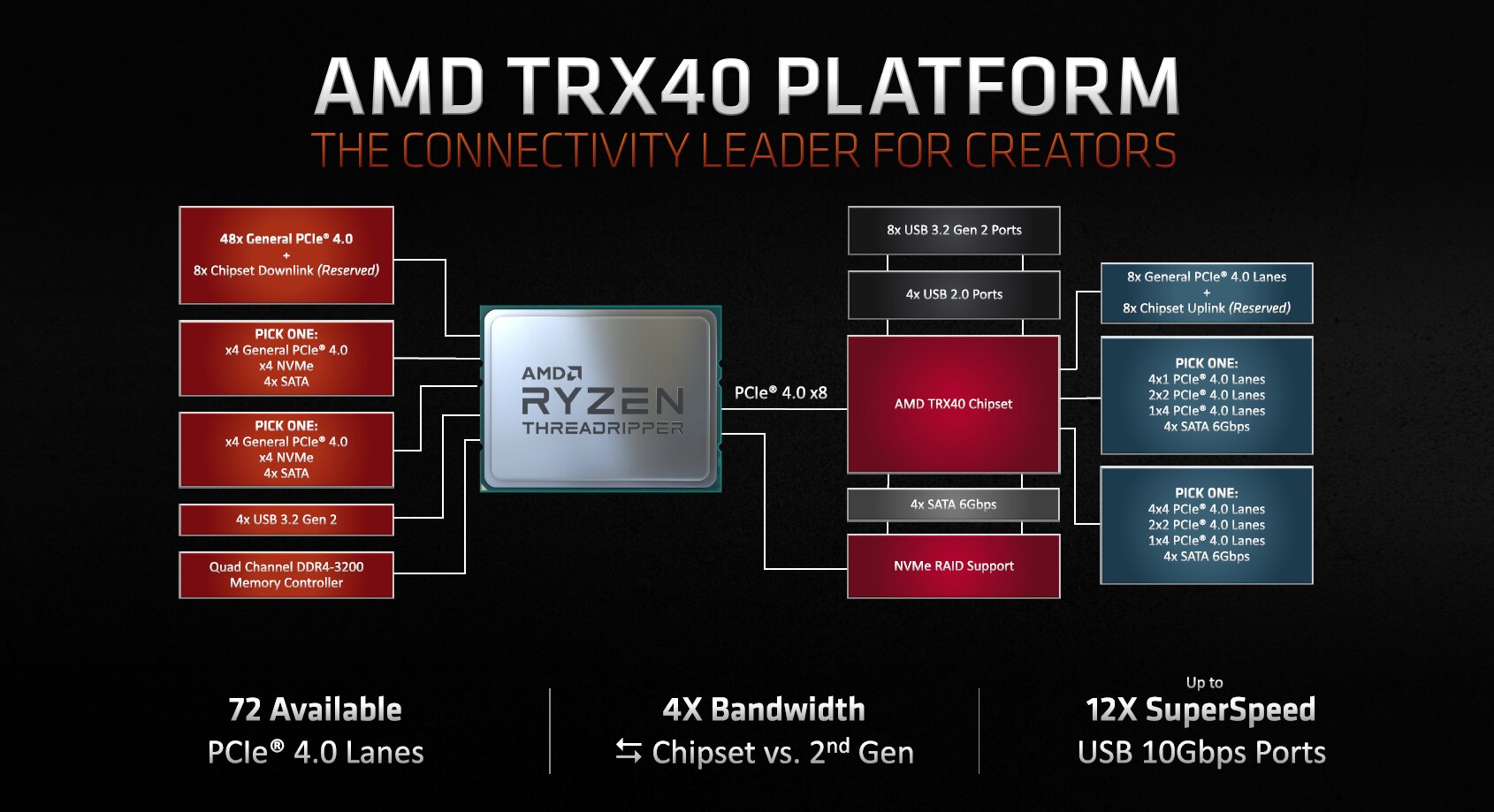
The equipment of the new high-end platform from AMD has no competition. Due to the same architecture as in the mainstream desktop, the CPUs offer the same features, but since the I / O die is a bit larger, the connections become more. Some of the 64 PCIe lanes of the I / O-Die are reserved, others are reserved for memory. In the end, however, there are still 48 freely usable lanes – three PCIe x16 slots can thus be fully controlled according to the PCIe 4.0 standard. In addition, additional 2 × 4 PCIe lanes can be used as such or for connecting NVMe drives or 2 × 4 SATA ports. This results in a total of 56 usable PCIe lanes of the CPU.
The actual chipset TRX40 is nothing more than the X570 for the high-end platform – in the predecessor, the X399 corresponded to the X370. The TRX40 chip built in 14 nm at Globalfoundries with a TDP of 15 watts maximum, which is the I / O die of the Matisse processors, offers the same connections as the X570 chipset for the AM4 socket. In order to do justice to the high-end platform, the connection to the processor with eight lanes is twice as wide as at the mainstream level. A maximum of 16 PCIe 4.0 lanes can be used directly in a variety of ways by the chipset, for example there are a maximum of twelve SATA ports on the X570 as well as four regular plus eight fast USB interfaces. Together with the CPU, the platform's 72 PCIe lanes according to Standard 4.0 are advertised by AMD.
Up to 256 GB RAM supported
Since the I / O die is practically the same everywhere, the memory configurations are also the same. Threadripper now also benefits from high clock rates, even when using large dual-rank modules. Only when fully loaded does the officially supported speed drop – but that does not stop you from clocking everything to the same, previous level. With Matisse, the new memory controller had already proven to be much better than before.
In theory, the TRX40 platform also supports ECC error correction. In the end, it is always up to the motherboard manufacturer to support this with a suitable BIOS. This has often been a problem in the past.
It's going to be expensive fun!
AMD's new high-end platform not only sets a new milestone in history in terms of performance, the price also increases significantly. And while the CPU surcharges for the offered remain realistic, the motherboards are an expensive undertaking. Many manufacturers of the boards have been able to really live here, the challenge for the customer is to find a board in affordable regions. Anyone who would have thought two years ago that the 300 to 400 euro X399 mainboards would already be expensive will not even get the cheapest for the successor. And this time there are really no limits.
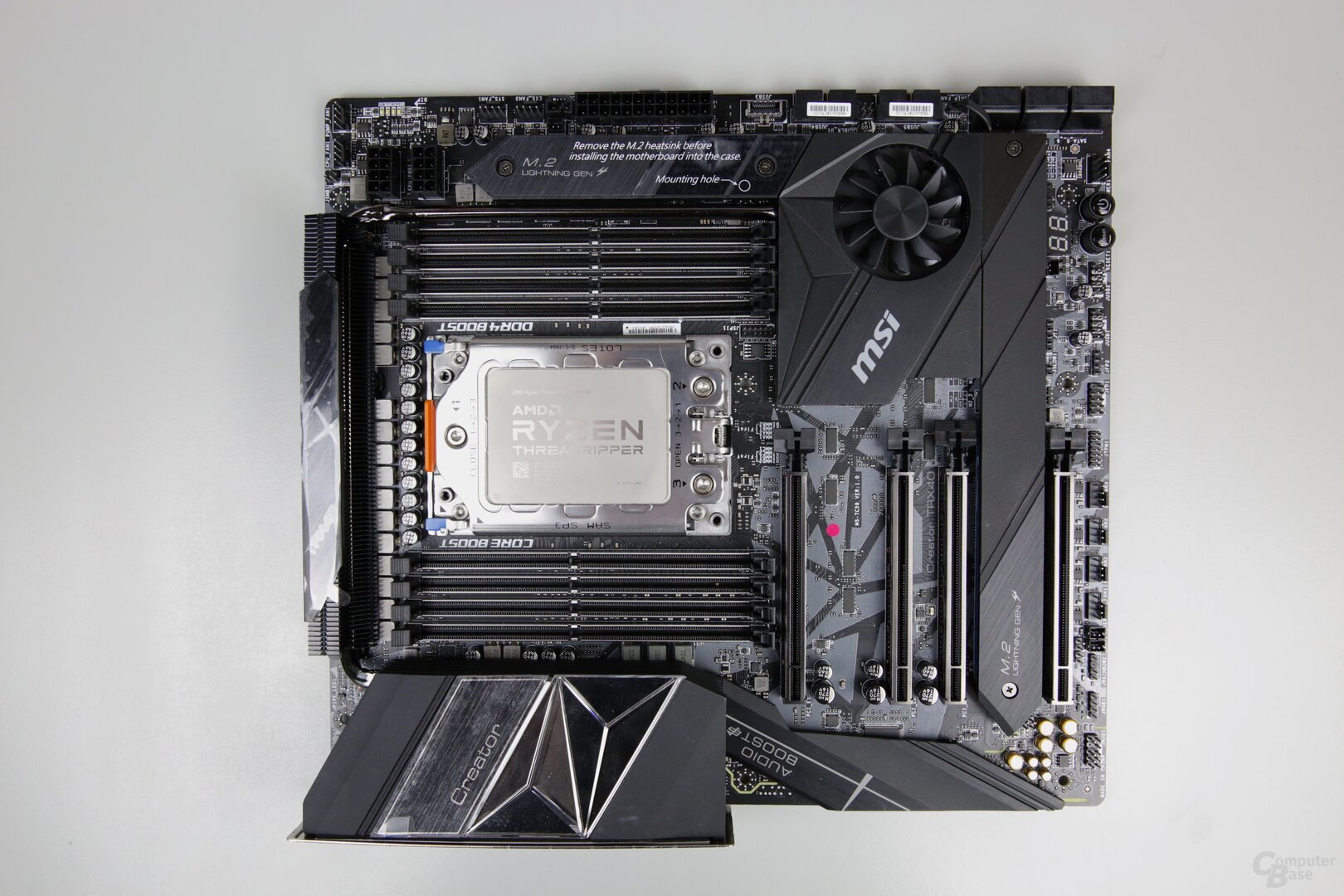
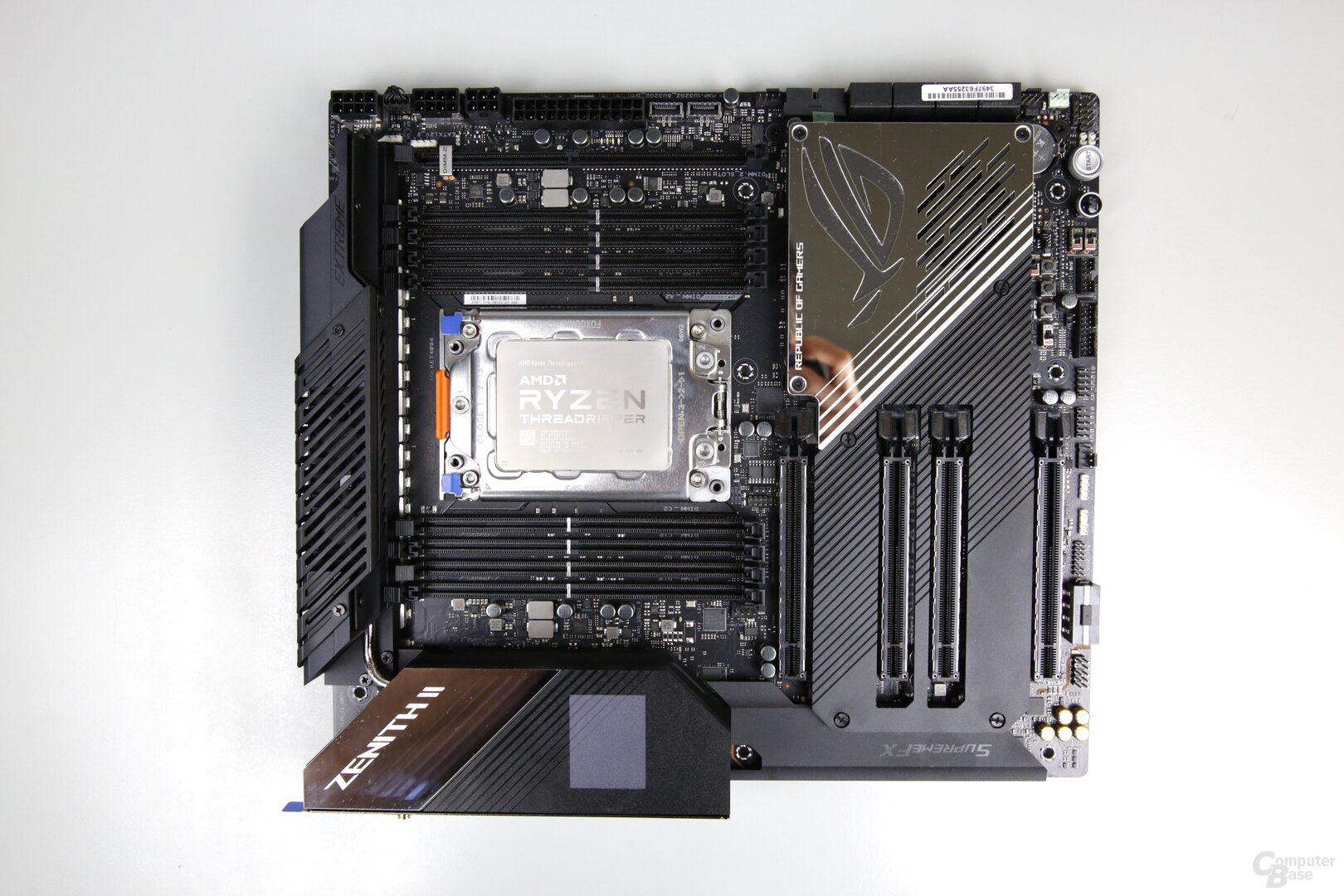
The price for the cheapest complete package consisting of CPU, board and at least one quad-channel memory kit at the start of November 2019 is well above the 2,000 euro mark. Maxed out 4,000 euros are possible without any problems, because 256 GB DDR4-3200 can easily be installed for the CPU of 2,150 euros – and they also cost at least 1,200 euros. It wasn't clear before the fall of the NDA what the most expensive board would cost. Just under four digits should be set.
And that's not the end, because 64 cores will come next year. The surcharge for the once more clear sole ruler in the market segment should be enormous. However, there is not yet an official price and a statement as to whether the Ryzen Threadripper 3990X will change the platform again.
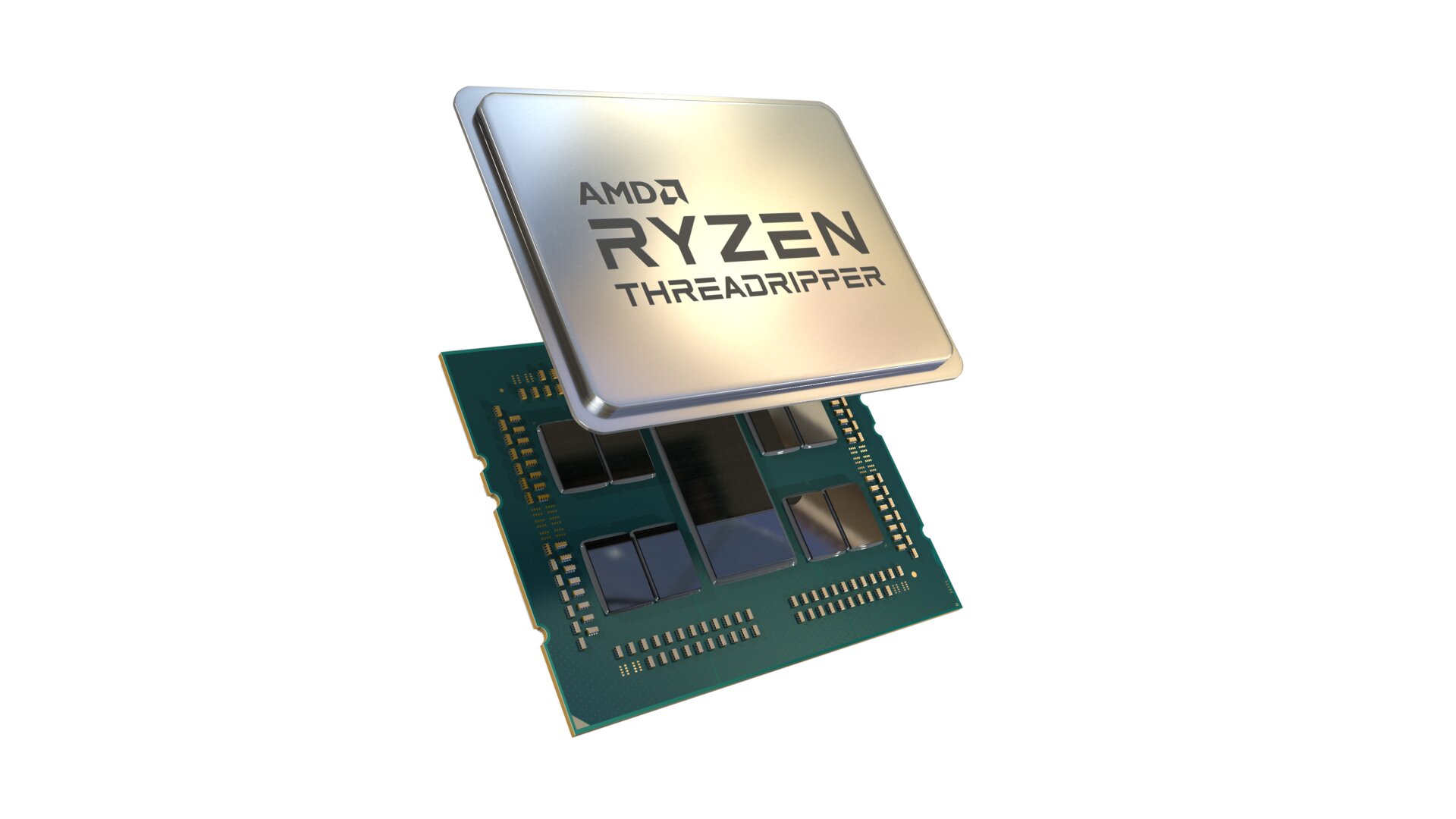
On the next page: benchmarks in applications and games




